Little Stealthy Flying Wing Drone Displayed By South Korea
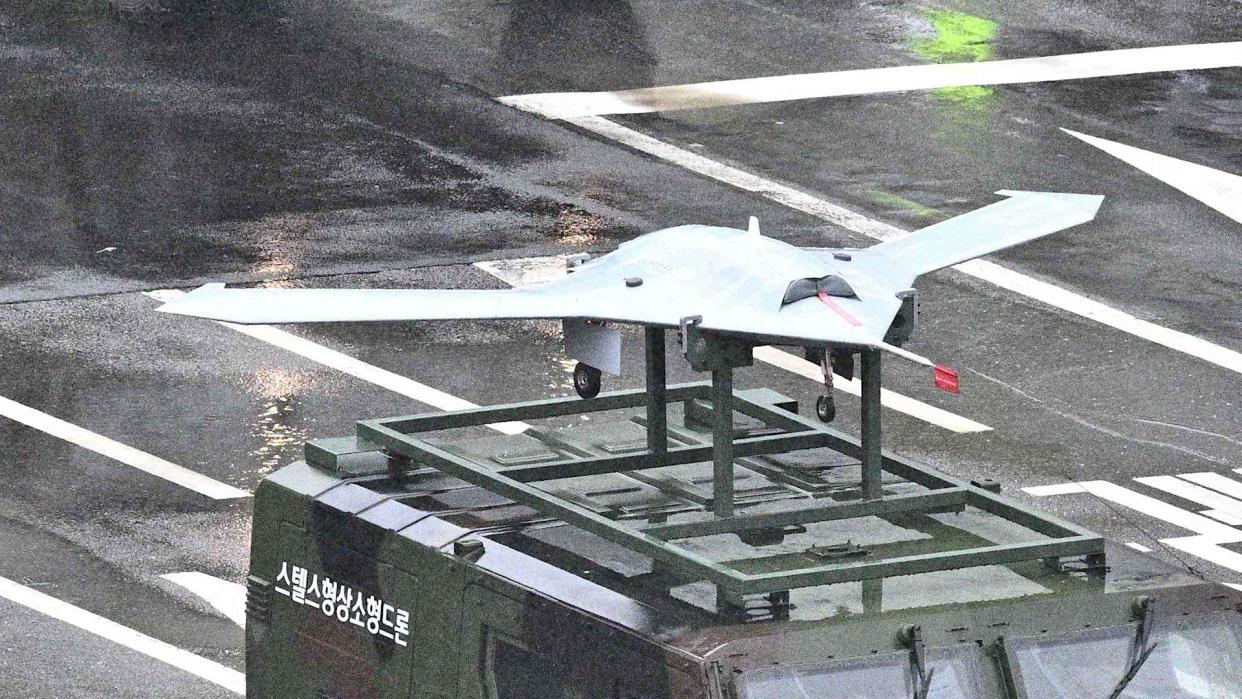
The South Korean armed forces have showcased a stealthy-shaped flying wing drone in a huge military parade in Seoul today. A small uncrewed aircraft like this could offer the country a less detectable and vulnerable means of conducting surveillance and reconnaissance missions. It might also be capable of performing other tasks, including launching electronic warfare attacks or kinetic strikes, or even hitting targets directly as a kamikaze drone/loitering munition.
The event in Seoul was held to mark South Korea's 75th Armed Forces Day and was the first parade of this scale in a decade. The country's Armed Forces Day officially falls on October 1, the day the South's forces advanced north on the Korean Peninsula across the 38th parallel in 1950 during the Korean War. However, commemorations were held early this year due to scheduling conflicts with a national holiday, something that has happened in the past.
https://www.youtube.com/watch?v=CkLf2rAeKnQ
A wide array of South Korean military hardware, including some of the country's ground-based ballistic and land attack cruise missiles, as well as various uncrewed air and maritime platforms, were put on display. The new Hyunmoo-V (Hyunmoo-5) ballistic missile, the country's largest to date, development of which was said to have been completed earlier this year, notably did not make an appearance.
https://twitter.com/KimJYeop/status/1706583308178801026?s=20 https://twitter.com/KimJYeop/status/1706517578322178468?s=20
The flying wing drone design was a particular stand out during the parade. Five of these uncrewed aircraft were included in the procession, each mounted on top of a 4x4 Kia Light Tactical Vehicle (KLTV). This combination looks to have been for the purposes of the event only given that the drones have tricycle landing gear, which points to a design intended to takeoff and land from traditional runways.
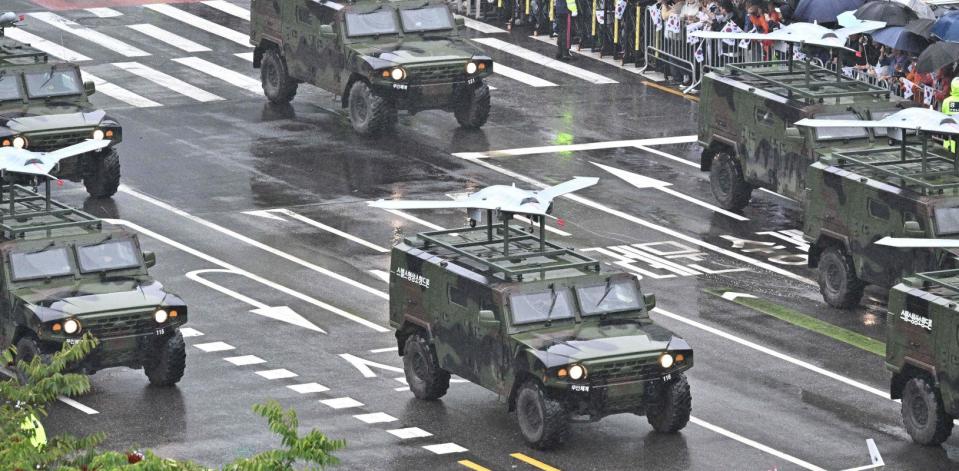
It is also not fully clear if these are mockups or flying examples of this design, but it certainly looks like the latter is true. The drones each have covers over their engine intakes on top of the center of their fuselages, as well as on the pitot tubes extending out from the center of their noses.
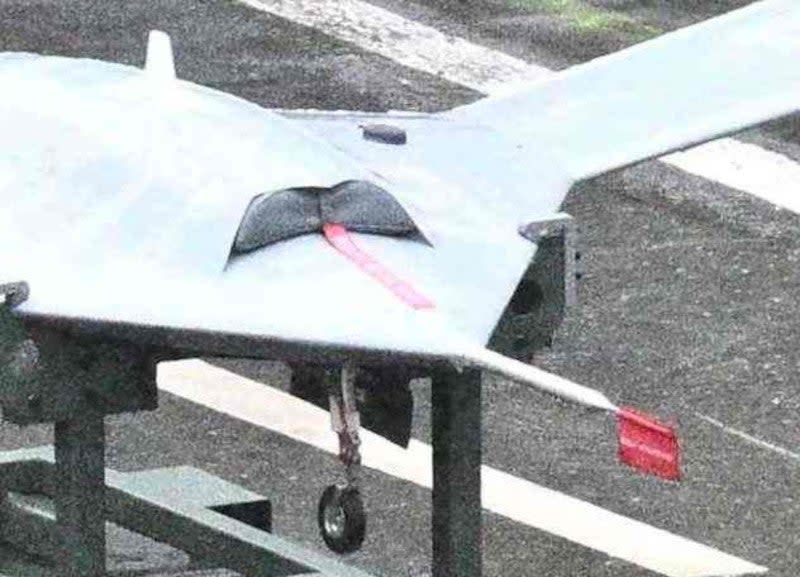
Overall, the drone appears to be similar in layout to a subscale demonstrator called the Kaori-X that Korean Air's Aerospace Division, or KAL-ASD, has been developing for years now and that first flew in 2015. But while the Kaori-X was a delta-like design, this aircraft features a 'cranked kite' configuration, similar to what is seen on the X-47B. This would provide a better tradeoff for endurance and slower speed flight over a more delta-like wing design.
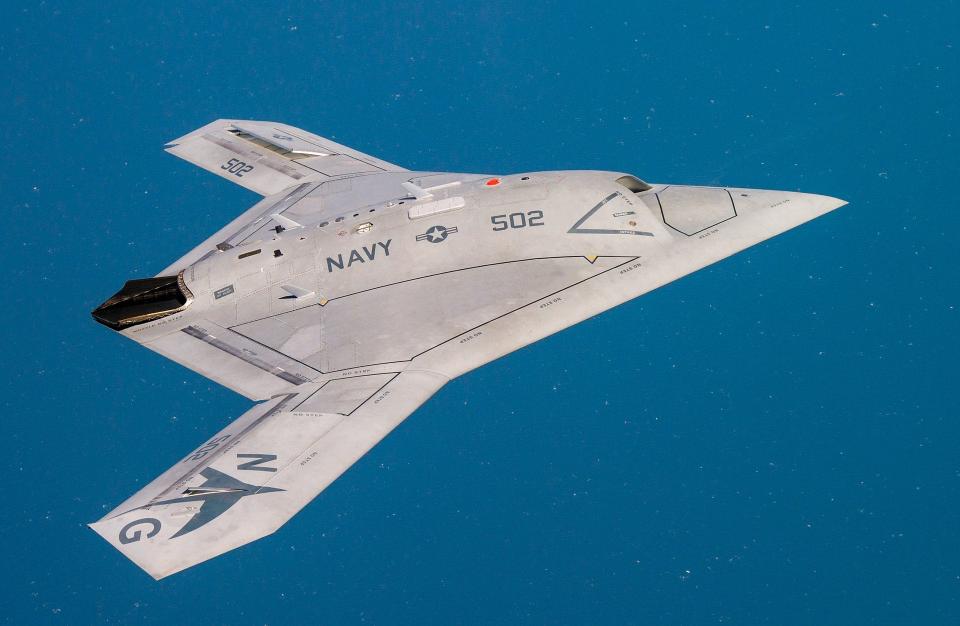
This new drone is also broadly reminiscent of a number of other flying wing-type uncrewed aircraft configurations from the United States, China, Russia, and other countries around the world, at least in general shape.

Details about the performance or other capabilities of the South Korean flying wing drones showcased today are scant. They do look to be around six to eight feet in length based on the just under 20-foot-long KLTV. Just how stealthy they might actually be, especially with the large probe sticking on the front and attached aerials, is unknown. Even if they feature 'reduced observability,' the small drones could still potentially be difficult to detect. South Korea is also well known for evolving their designs over time, especially in terms of stealth technology ambitions. They are doing exactly this with the KF-21. We could see the probe and aerials be replaced with conformal components in the future, enhancing its low-observable characteristics.
https://twitter.com/KimJYeop/status/1706581893909721541?s=20
The drones are "basically for reconnaissance; for now," Kim Jae Yeop, a senior researcher at the Sungkyun Institute for Global Strategy (SIGS) in South Korea, wrote on X, formerly Twitter, earlier today. "It may be improved for capable of attack missions in the future."
https://twitter.com/KimJYeop/status/1706645465356472420?s=20
"Still unclear how much ... those drones are ready for operations," he wrote in another post on X.
In the past, Kaori-X has been primarily presented as a stepping stone to a true uncrewed combat air vehicle (UCAV). However, operationalizing the smaller demonstrator design, which has already been flying for the better part of a decade, would make good sense.
The drones would offer South Korea new options for keeping tabs on various North Korean activities in certain areas, such as around the demilitarized zone, or DMZ, that separates the two halves of the Peninsula during peacetime. Depending on their signature, the uncrewed flying wings could be able to perform surveillance and reconnaissance missions more discreetly than many other existing aerial platforms. During an all-out conflict on the Peninsula, the flying wing drones could be used for intelligence, surveillance, and reconnaissance (ISR) and other missions over the North itself. Spotting artillery and other targets of interest across the DMZ could be valuable and that mission would make sense considering their diminutive size.
Beyond watching for enemy movements and helping to find and fix targets, these uncrewed aircraft might be able to carry electronic warfare jammers or very small munitions. Depending on how costly they are, it might be possible to employ them as kamikaze drones. It is interesting to specifically compare these possibilities with what Iran has done with its array of similar-sized flying wing-type and delta-wing drones, some of which were based on the shape of the captured stealthy RQ-170 Sentinel.
Radio relay could be another role for the little jet-powered flying wing drones.
None of this, of course, precludes the use of Kaori-X, or designs derived from it, as part of a pathway to a future UCAV, which very much remains part of South Korea's publicly stated drone plans. And this still may be the primary driver behind the craft we saw in the parade.
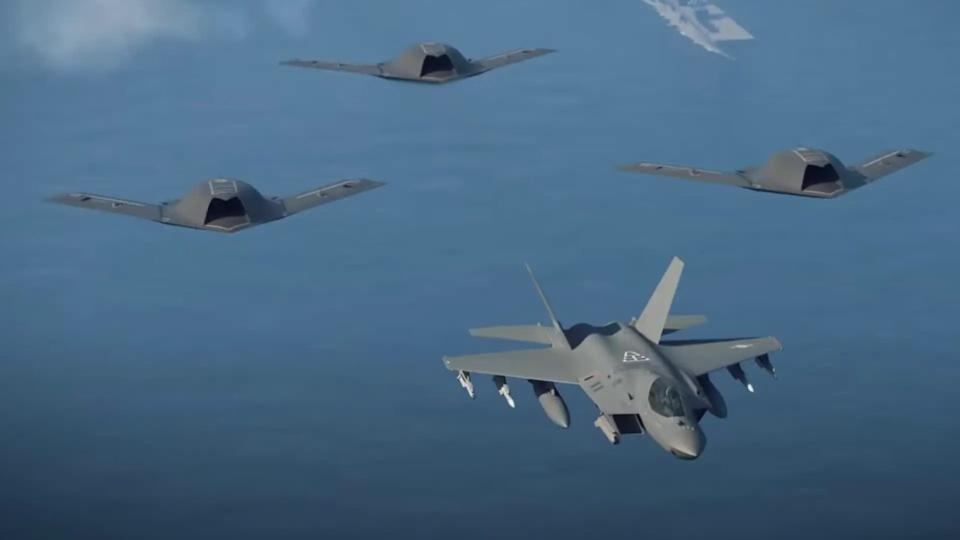
On September 1, the South Korean armed forces announced the creation of a dedicated drone operations command.
"The command will mainly utilize the unmanned assets to carry out defensive and offensive operations and deter various asymmetric threats posed by the enemy, including drones, nuclear weapons, and other weapons of mass destruction during a contingency," South Korea's Joint Chiefs of Staff (JCS) explained earlier this month, according to a report from South Korean media outlet Yonhap. "It is also tasked with conducting surveillance, reconnaissance, and strike operations, as well as psychological warfare and electromagnetic warfare at a strategic and operational level."
South Korea is in the process of expanding its aerial drone fleets, as well as its arsenal of loitering munitions, also referred to as kamikaze drones. These efforts include the continued development of Korean Air's KUS-FS, a non-stealthy, medium-altitude, long-endurance design in the same vein as the U.S. MQ-9 Reaper, as well as plans for more advanced UCAVs and loyal wingman-type drones.
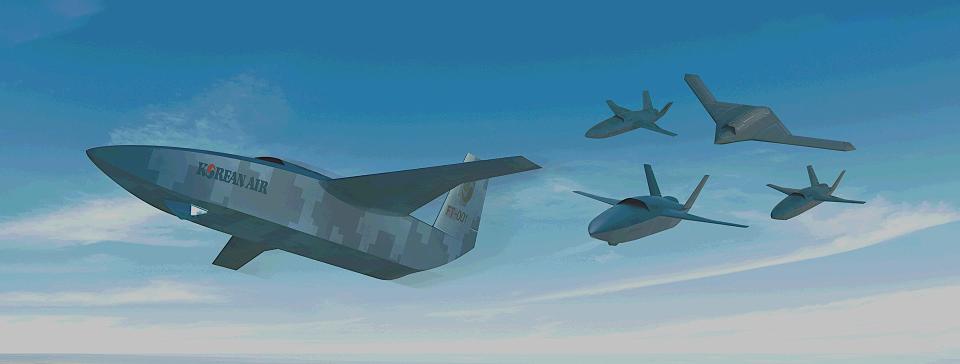
South Korea is also expanding its defenses against North Korea's own growing uncrewed aircraft capabilities, which you can read more about here. Incidents involving North Korean drones intruding into airspace over the South have been increasing in recent years. This includes an incident last December that saw one of North Korea's uncrewed aircraft fly into a no-fly zone around the country's Presidential Office in Seoul. Seoul has clearly taken note of the challenges with detecting and downing small drones. The war in Ukraine has also likely spurred greater development of smaller types with good endurance.
Today's parade in South Korea comes amid a period of increasingly fiery rhetoric and posturing, including today's parade in Seoul. There has also been something of an arms race on the Peninsula, especially when it comes to ballistic and cruise missiles in recent years.
This year has seen a number of notable North Korean demonstrations of its missile and potential nuclear weapons delivery capabilities. Just earlier this month, North Korea announced the launching of a long-awaited missile submarine converted from a thoroughly obsolete Cold War-era Romeo class diesel-electric submarine. Though much about the actual capabilities of what has been named the Hero Kim Kun Ok remains to be seen, it does underscore North Korean ambitions to acquire this kind of more survivable second-strike nuclear weapon delivery capability. Despite its dated underlying design, the submarine would still force South Korea and its allies to expend valuable anti-submarine resources to constantly track it and be in a position to sink it during a conflict.
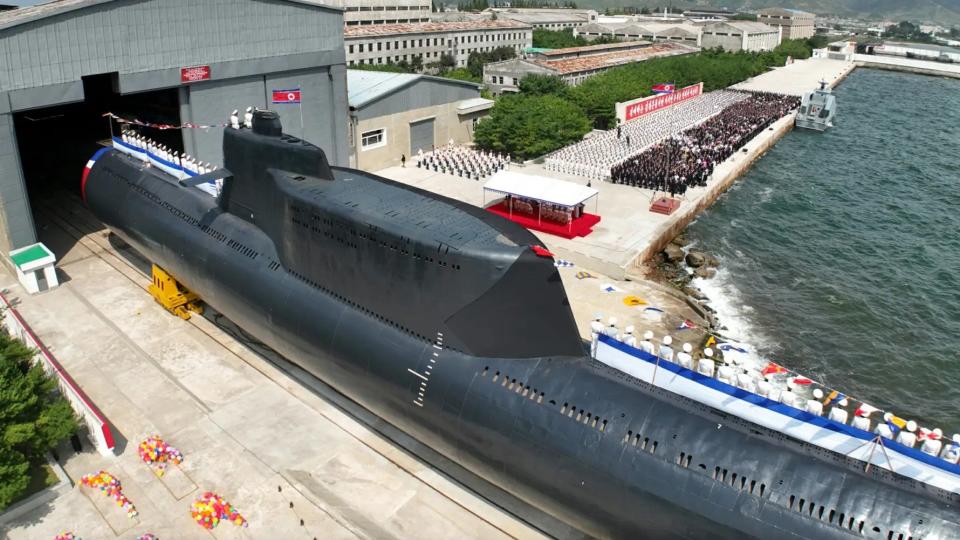
In April, the governments of the United States and South Korea announced a number of new steps to deepen their relationship as part of an agreement known as the Washington Declaration. This notably included increased engagement on the potential use of U.S. nuclear weapons on the peninsula in response to North Korean threats and a pledge to step up routine deployments of American strategic military assets to the region. This has already included a visit by the USS Kentucky, a U.S. Navy Ohio class nuclear ballistic missile submarine, or SSBN, to South Korea in July. This was the first time in some four decades that an Ohio SSBN had sailed into a South Korean port.
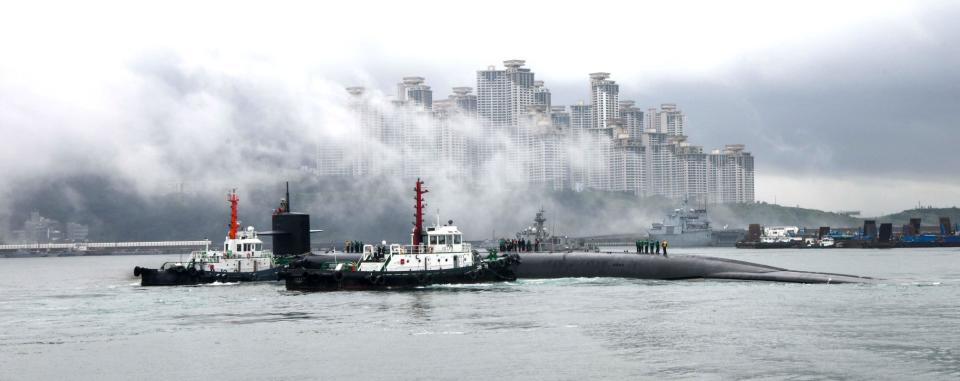
“Based on battle-ready combat capabilities and a solid readiness posture, our military will immediately retaliate against any North Korean provocation,” South Korean President Yoon Suk Yeol said in an address at the end of today's Armed Forces Day parade. “If North Korea uses nuclear weapons, its regime will be brought to an end by an overwhelming response."
South Korea's little stealthy-looking flying wing drones could eventually help monitor North Korean activities, and watch signs of more serious provocations and threats, if they aren't already.
Contact the author: joe@thedrive.com

